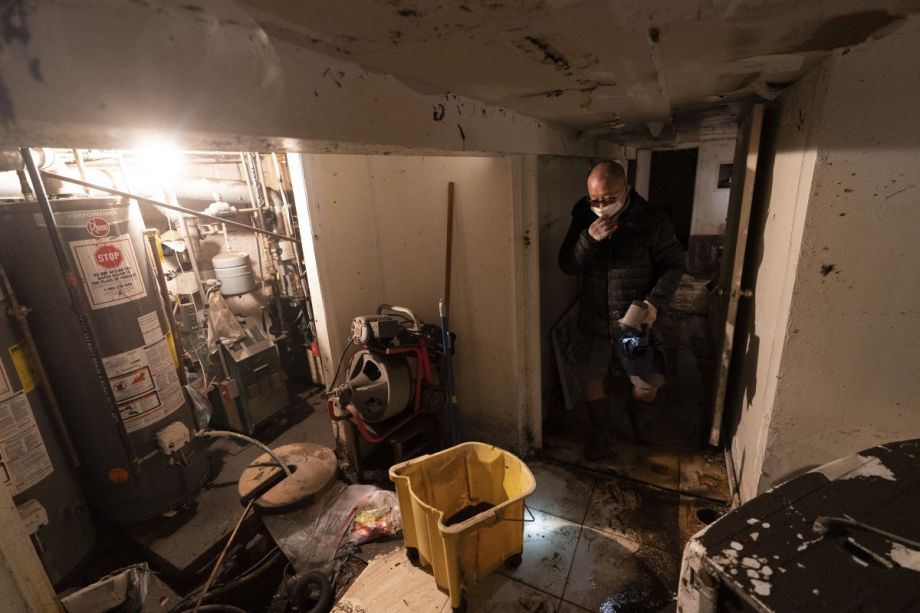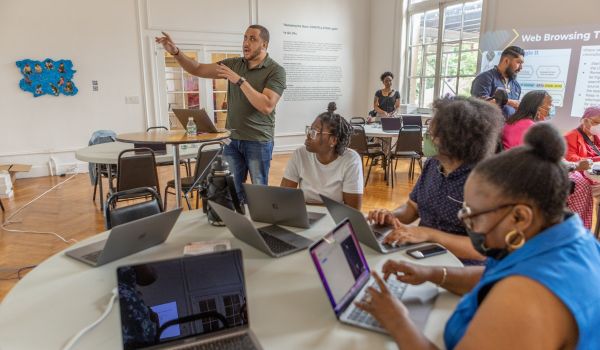A year after the remnants of Hurricane Ida killed 13 New York City residents, 11 of them having drowned in basement apartments, the city and state have made little progress in legalizing unauthorized basement units or making them safer.
Necessary statewide legislation that would have allowed the city to reform its own building codes was dropped from the state budget in February. City officials have gestured at reforms they can enact without state cooperation – including as-yet unreleased zoning amendments promised by Mayor Eric Adams and a detailed proposal from the comptroller’s office, but neither plan has accompanying legislation.
“Tenants and homeowners both are effectively in the same place they were a year ago, as far as protections go,” says Lena Afridi, acting director at the Pratt Center for Community Development. “People are still people experiencing flooding, people are worried about what’s going to happen next, because nothing has actually changed.”
In February, Gov. Kathy Hochul dropped a law from the state budget that would have allowed homeowners to have at least one accessory dwelling unit on their property. The law also would have eased restrictions on cellar units and other land use issues that made basement conversions expensive and legally challenging. But that legislation was dropped after pushback, mainly from residents and lawmakers in suburban Long Island.
In June, the Adams administration announced it would be proposing changes to the city’s zoning laws in order to encourage more housing. The administration announced these changes would “broaden the acceptable variety of housing types and sizes,” which advocates believe refers to additional dwelling units and basement apartments.
“Many of those zoning issues are what categorically prevents a lot of these units from moving out of the gray market into our formal housing stock,” says Katherine Leitch, senior policy analyst at Citizens Housing and Planning Council (CHPC). But advocates are still in the dark as to what that legislation would look like, and the mayor’s office did not provide a timetable for introducing it.
CHPC released a report in August highlighting a suite of safety measures for basement apartments, among them water pumps and a fee structure to disincentivize stormwater runoff, as well as additional exits. But for homeowners to actually enact these changes legally, those basement apartments would have to become legal.
“Legalization is fundamental to all other safety features. If we can’t legalize a unit, then a homeowner can’t pull a permit legally to install emergency escape and rescue windows,” Leitch says.
While many of the roadblocks to legalization require statewide legislation, there are fixes that could happen on the city level. One is a requirement that residential buildings provide a certain amount of parking units for tenants, depending on the number of units and neighborhood density. The requirement increases the cost of legalizing units, but it’s also counterproductive to the task of reducing stormwater runoff: Most parking spaces consist of asphalt and concrete, impermeable surfaces that cause rainwater to pool and increase risk of flash flooding.
“We are prioritizing parking above life safety,” Leitch says. “The owner can’t legalize the unit if they can’t provide parking, which means they can’t pull a permit. They can’t do necessary life safety features.”
Adams’ June announcement about zoning changes also said the reforms would “reduce unnecessary parking requirements,” long an issue among affordable housing proponents, transit advocates and climate advocates.
But such legislation would likely lead to pushback from car-owners, and zoning changes in general tend to generate pushback. “There’s going to need to be real coordination between the state, the city and advocates and city council to make sure that this stuff goes through,” Afridi says.
In late August city comptroller Brad Lander released a plan for the city to address basement apartments in the short-term. Lander’s office proposed a “Basement Resident Protection Law” that would require homeowners to register the informal basement units with the city. In exchange the owners would get funding for safety measures including smoke detectors and water pumps. Tenants and landlords would also be covered by the city’s rent laws, so that tenants would be eligible for the city’s right to counsel program.
Under Lander’s approach, the units would still fit into a legal gray area under state law, though the city would be better able to target its resources. Yet this approach would run into huge challenges, as many property owners are reluctant to communicate with city officials for fear of enforcement. Under the current regime, the city’s Department of Housing Preservation and Development issues a vacate order to tenants in basement units found to be uninhabitable.
Some tenants would still be asked to vacate under Lander’s plan, but their relocation would be funded. Lander’s office tells Next City this could cost about $70 million a year, but this figure is based on a low estimate of 50,000 illegal basement units across the city. Prior estimates have put the number of basements that could potentially be converted between 200,000 and 500,000 citywide.
Cost estimates from a basement legalization pilot defunded in 2020 caused alarm among some electeds, though advocates say this alarm misconstrues the point of the pilot. According to the NY Post, the city estimated in a draft report to the federal government that bringing 50,000 basement units up to code would cost close to $14 billion. But that estimate was premised on current restrictions at the state and city level remaining in place.
The BASE Coalition, a group of nonprofits which have been advocating for basement legalization since 2006, published a response clarifying per-unit cost would decrease by six figures if reforms were passed.
“Those estimates are based on our current regulatory regime,” Leitch says. Right now, the city’s building code defines a basement as any unit with 50% of its height from floor to ceiling is above street level and defines cellar as any unit 50% of its height below the street. Cellars are considered uninhabitable by the state’s multiple dwelling law, but basements are permitted. The conversion of a cellar into a basement could require excavation to raise the ceiling an inch or two, a very expensive process.
“We’re telling people in order to comply, you would have to excavate your basement to achieve a few inches,” Leitch says.
Overall, she believes, the pilot was a success. “The point of a pilot is to understand what the barriers are, whether proposed changes are sufficient, whether we need additional reforms, and I think the pilot achieved that,” Leitch says.
One safety measure the city is considering on its own is a stormwater fee, a surcharge for property owners based on how much outdoor surface area on their property is unable to absorb rainwater. The fees are meant to spur property owners to replace concrete, asphalt or other impervious surfaces with more absorbent material like soil, greenspace, or porous forms of concrete and asphalt.
The city’s Department of Environmental Protection is currently analyzing the feasibility of such fees and results will be available in August 2023.
Ivy Perez, manager of policy and research at the Center for NYC Neighborhoods, cautioned that fees intended as a disincentive are best when they are tailored to different income levels. “Sometimes imposing those kinds of fees could encourage homeowners or property owners to be less transparent about what’s going on,” Perez says. “If any fee is going to be imposed, there should also be resources available.”
According to the CHPC report, Palo Alto, San Diego, Milwaukee and Philadelphia all provide forms of financial and technical assistance to property owners for making their lots more absorbent.
In an email to Next City, a spokesperson for the city’s Department of Environmental Protection said that “a stormwater based rate is just one of the alternatives being looked at” in the study. The spokesperson said DEP already offers grants to property owners who reach out about installing greenspace and that the agency proactively contacts property owners with large impervious areas to offer assistance.
In the meantime, advocates are still hoping the state moves forward with its stalled ADU legislation and the city does not deflect responsibility for budgetary reasons.
“Climate change is here, and it’s going to cost a lot more than $14 billion to make up for the damages,” Afridi says, referring to the inflated estimate. “Beyond that, it’s literally people’s lives, we can’t just say it costs too much.”
A previous version of this story misstated Afridi’s title and said there are an estimated 200,000-500,000 illegally inhabited basement units rather than the number of basements that could potentially be converted. We regret the errors.
This article is part of Backyard, a newsletter exploring scalable solutions to make housing fairer, more affordable and more environmentally sustainable. Subscribe to our weekly Backyard newsletter.

Roshan Abraham is Next City's housing correspondent and a former Equitable Cities fellow. He is based in Queens. Follow him on Twitter at @roshantone.


















